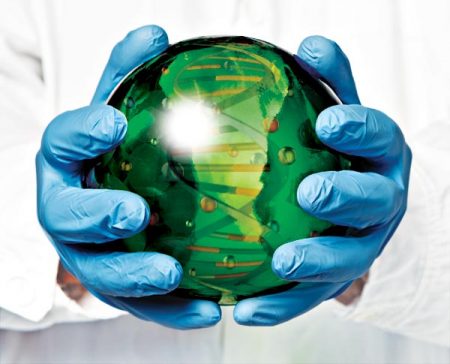April 9, 2017 – “Life itself is becoming programmable,” states Bryan Johnson, a member of a venture capital fund that is investing in companies pursuing the creation of synthetic biology.
You won’t recognize these company names. None are part of big pharma. But all are pursuing the design and construction of artificial life to use it for biomedical, environmental, agricultural, energy and industrial applications. Manipulating DNA and altering existing lifeforms to create new ones is seen as a way to help feed humanity, tackle climate change and end freshwater scarcity.
Tell me if you have heard of any of these companies:
- ATUM
- AMSilk
- BioAmber
- Bolt Threads
- Codexis
- Ecovative
- Evolva
- Ginkgo Bioworks
- Green Biologics
- Halozyme Therapeutics
- Invista
- Modern Meadow
- Novozymes
- Synthetic Genomics
- Thermo Fisher Scientific
- Twist Bioscience
- Verdezyne
- Ziopharm
I’m betting none jump out at you. But these are companies in hot pursuit of cloning, DNA sequencing, genomic engineering, biofuel development, and nanotechnology just to name a few of the fields driving advancements in synthetic life. Many are spinoffs of university research projects. And many are receiving significant funding from defense research budgets, biopharmaceutical companies, and Silicon Valley angel and new venture funds.
Back in 2010 Craig Venter, the first scientist-inventor to map the entire human genome announced he had manufactured Mycoplasma mycoides, a bacteria containing a single chromosome. He subsequently transplanted it into another species of Mycoplasma which went on to successfully replicate.
In March of this year, a team of scientists announced they had created synthetic chromosomes for Baker’s yeast. Yeast contains 16 chromosomes. The team had synthesized five of the 16 and expected to have all completed within the year.
The ability to create synthetic yeast represents a step beyond Venter’s 2010 accomplishment. Where Venter synthesized prokaryotes, bacteria, and algae, yeast is a eukaryote, a cell that characterizes life forms from fungi to plants and animals.
Prokaryotes are much simpler. Eukaryotes, on the other hand, contain a nucleus and other organelles, as well as complex membranes not found in prokaryotes. Eukaryotes can differentiate into cells that form muscle, nerve, bone and brain. That’s why synthesizing yeast is truly a big deal.
So what can we do with it?
Researchers want to use yeast to mass produce antibiotics, vaccines, biofuel, insulin, chemicals of all kinds including synthetic silks and perfumes, and even microbial fuel cells. States Jef Boeke, the lead researcher of the yeast project, a geneticist at New York University Langone Medical Center, “this work sets the stage for completion of designer synthetic genomes to address unmet needs in medicine and industry.”
Another research laboratory located at the University of Edinburgh is busily trying to add a 17th chromosome to yeast. Lead researcher, Patrick Cai states, that “We’re shortcutting evolution by millions of years…Our goal here is not engineering a particular kind of yeast, but the kind of yeast that is amenable to engineering.”
It Doesn’t Stop with Yeast
One company, Bolt Threads, is combining yeast, sugar and DNA code from spiders to spin new fibers. The end result is silk that can stretch like spandex while retaining the strength of steel. A competitor, AMSilk is creating biosteel from spider DNA.
Modern Meadow, is using engineered cells to create synthetic leather.
Ecovative is manipulating plant and mushroom fibers to grow synthetic wood for flooring, tables, paneling and packaging. The U.S. Department of Defense has issued a contract to the company to develop temporary living structures that reduce waste and don’t involve cutting down trees.
Another company, Ginkgo Bioworks is using DNA code from existing and extinct plants to create perfumes and food sweeteners. By “mixing and matching” DNA the company can produce its products at costs 50 to 90% less than competitors. And better yet, the company doesn’t use laboratory animals for testing.


















